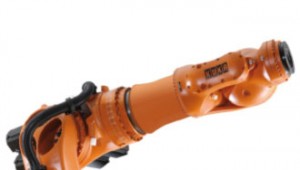Granta Automation balances the robotic debate
 If you’re considering introducing industrial robots into your production line, then you should consider both the advantages and disadvantages of industrial robots, before making a decision.
If you’re considering introducing industrial robots into your production line, then you should consider both the advantages and disadvantages of industrial robots, before making a decision.
Advantages of Industrial Robots
1. Increased efficiency: Industrial robots are able to complete certain tasks faster and better than people, as they are designed to perform these tasks with a higher accuracy level. This and the fact that they are used to automate processes which previously might have taken significantly more time and resources, means that you can often use industrial robots to increase the efficiency of your production line.
2. Higher quality: Due to their high accuracy levels, robots can also be used to produce higher quality products which adhere to certain standards of quality, whilst also reducing the time needed for quality control.
3. Improved working environment: Industrial robots are often used for performing tasks which are deemed as dangerous for humans, as well as being able to perform highly laborious and repetitive tasks. Overall, by using industrial robots you can improve the working conditions and safety in your factory or production plant. Robots don’t get tired and make dangerous mistakes, neither do they suffer from repetitive strain injury.
4. Increased profitability: By increasing the efficiency of your production process, reducing the resource and time needed to complete it, and also achieving higher quality products, industrial robots can thus be used to achieve higher profitability levels overall, with lower cost per product.
5. Longer working hours: Typically people have to have breaks, get distracted and after time attention drops and pace slows. With a robot it can work 24/7, and keeps running at 100%. Typically if you replace one person on a key process in a production line with a robot the output increases by 40% in the same working hours just because a robot has more stamina and never stops. Robots also don’t take holidays or have unexpected days off sick.
6. Prestige: You set yourself at the cutting edge of your industry and wow your customers when they come to see you. As a marketing tool robots are fantastic, boost your brand image, and have often been used simply for the PR even if they don’t offer many benefits over a bespoke non-robotic system.
Disadvantages of Industrial Robots
1. Capital cost: Whilst industrial robots can prove highly effective and bring you a positive ROI, implementing them might require a fairly high capital cost. That’s why, before making a decision we recommend considering both the investment needed and also the ROI you expect to achieve. Often the easiest way to get round this issue is to take out asset finance and the ROI of the robot more than pays for the interest on the asset finance. Use Granta’s project builder to find out how much industrial robots would cost you in just a few minutes.
2. Expertise: Whilst industrial robots are excellent for performing many tasks, as with any other type of technology, they require more training and expertise to initially set up. The expertise of a good automation company with a support package will be very important. To minimise your reliance on automation companies you can train some of your engineers on how to program robots, but you will still need the assistance of experienced automation companies for the original integration of the robot.
3. Limitations: In recent years the number of industrial robots and the applications they can be used for has increased significantly. However, there still are some limitations in terms of the type of tasks they can perform, which is why we suggest that an automation company looks at your requirement to assess the options first. Sometimes a bespoke automated system may give a better or faster result than a robot. Also, a robot does not have everything built into it, often the success or failure of an industrial robotic system depends on how well the surrounding systems are integrated for example grippers, vision systems, conveyor systems etc. Only use good trusted robot integrators to be sure of the optimum results if you do choose to use industrial robots.
Visit the Granta Automation website for more information
See all stories for Granta Automation















